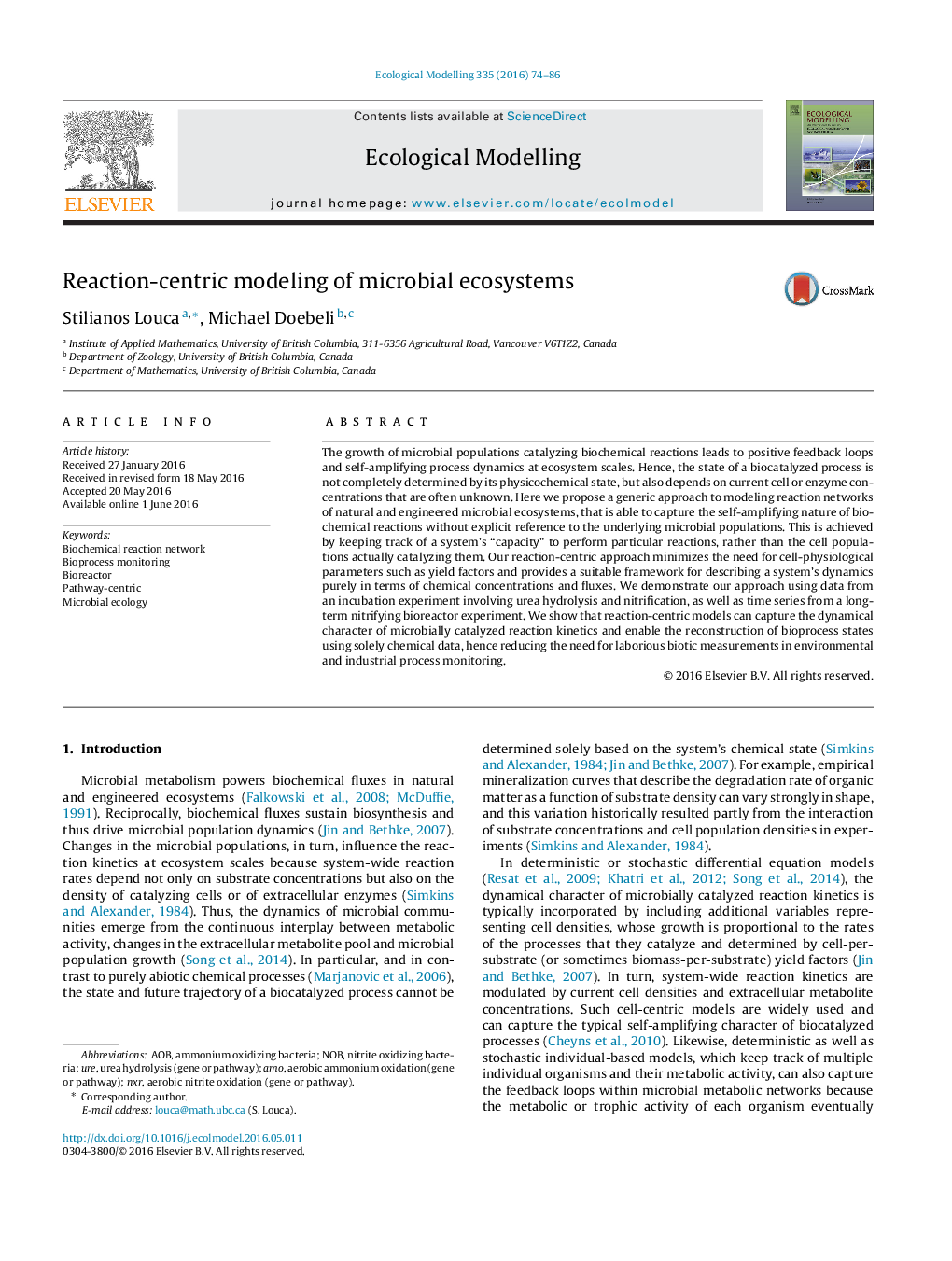| کد مقاله | کد نشریه | سال انتشار | مقاله انگلیسی | نسخه تمام متن |
|---|---|---|---|---|
| 4375542 | 1617412 | 2016 | 13 صفحه PDF | دانلود رایگان |
• We introduce a new “reaction-centric” modeling framework for microbial communities.
• The model keeps track of a system's capacity to perform particular reactions.
• The model minimizes the need for cell-physiological parameters and cell counts.
• A system's states can be reconstructed purely using chemical time series.
• We demonstrate our approach using experimental data from nitrifying bioreactors.
The growth of microbial populations catalyzing biochemical reactions leads to positive feedback loops and self-amplifying process dynamics at ecosystem scales. Hence, the state of a biocatalyzed process is not completely determined by its physicochemical state, but also depends on current cell or enzyme concentrations that are often unknown. Here we propose a generic approach to modeling reaction networks of natural and engineered microbial ecosystems, that is able to capture the self-amplifying nature of biochemical reactions without explicit reference to the underlying microbial populations. This is achieved by keeping track of a system's “capacity” to perform particular reactions, rather than the cell populations actually catalyzing them. Our reaction-centric approach minimizes the need for cell-physiological parameters such as yield factors and provides a suitable framework for describing a system's dynamics purely in terms of chemical concentrations and fluxes. We demonstrate our approach using data from an incubation experiment involving urea hydrolysis and nitrification, as well as time series from a long-term nitrifying bioreactor experiment. We show that reaction-centric models can capture the dynamical character of microbially catalyzed reaction kinetics and enable the reconstruction of bioprocess states using solely chemical data, hence reducing the need for laborious biotic measurements in environmental and industrial process monitoring.
Journal: Ecological Modelling - Volume 335, 10 September 2016, Pages 74–86
